
The 2011 Japan earthquake reminds us that the world is small and disasters often come in multiples. Japan’s mega-quake spawned a killer tsunami and a nuclear meltdown. The United States faces the same geographic and nuclear threats and several more that are not so obvious. The most urgent dangers to U.S. life and security range from harmless-looking microchips to deadly health epidemics. Here are 20 threats that could change life overnight or continue to erode American society as we know it.
Earthquakes, Volcanoes, and Tsunamis
1. East Coast Monster Tsunami
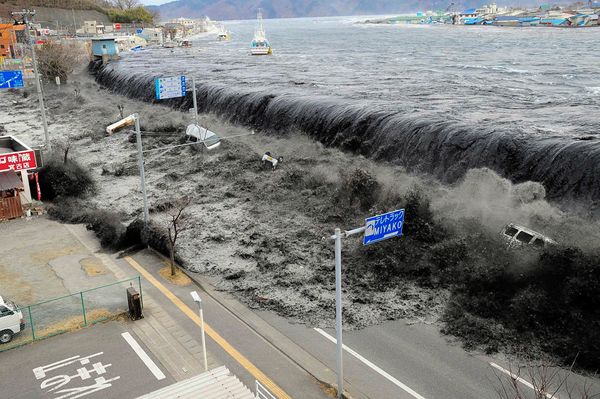
While tsunamis are most often associated with the earthquake-prone Pacific region, the most deadly risk is on the East Coast. Massive waves from the Canary or Cape Verde Islands could speed across the Atlantic and slam an 80-foot wall of water into the U.S. coast. The Atlantic coastline is densely populated from Florida to Maine, making the potential loss of life higher than from a large West Coast quake. Elevation of populated cities is lower, and there are fewer hills and cliffs to block the sea from rushing inland. The active Cumbre Vieja volcano in the Canary Islands poses a particular danger if a large chunk falls into the ocean. While geologists at England’s Southampton Oceanography Center put chances at only 5 percent, others cite the volcano’s volatile recent history. Part of its face fissured and slipped several feet after it erupted in 1949. Should the worst happen, the entire East Coast might have only nine hours to evacuate.
2. Mississippi River Valley Earthquake
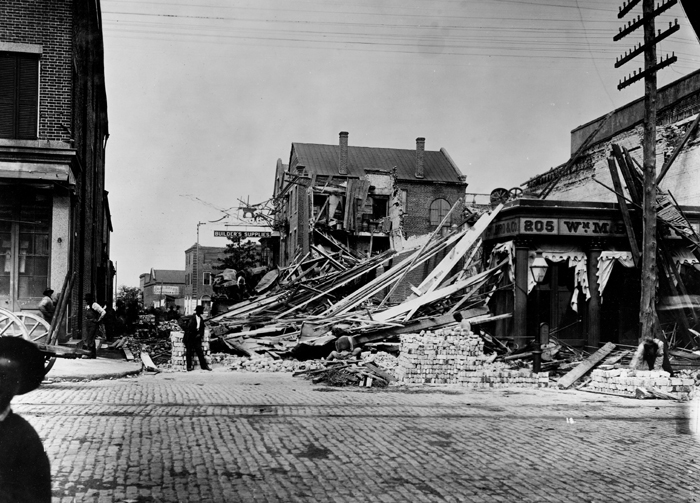
Before California became synonymous with earthquakes, the Mississippi River Valley was shaking the Midwest with nearly 8.0-magnitude temblors. Between December 1811 and February 1812, the New Madrid Fault unleashed three quakes that proved the strongest on record in the continental United States. The low population minimized casualties and property damage. These days, even a moderate earthquake in the area could prove disastrous. The New Madrid Fault runs between Arkansas and Illinois and anchors a seismic zone that encompasses five states including Tennessee, Kentucky and Missouri. The earth is largely solid rock that allows seismic waves to travel far while retaining strength. In contrast, West Coast cities sit on fragmented earth that more quickly dissipates shock waves. A 6.5-magnitude quake on the New Madrid would likely produce as much damage as a larger one on the San Andreas Fault, and scientists say that the affected region would be 10 times greater. Compounding geology is the fact that the Midwest has not invested in seismic retrofitting. Cities such as St. Louis and Memphis could see far more lethal damage than LA or San Francisco in the same scenario. According to earthquake experts, the Mississippi area has a 10-percent chance of a quake near 8 magnitude and a 40-percent probability of a 6.0 within 50 years.
3. Gulf Coast Tsunami
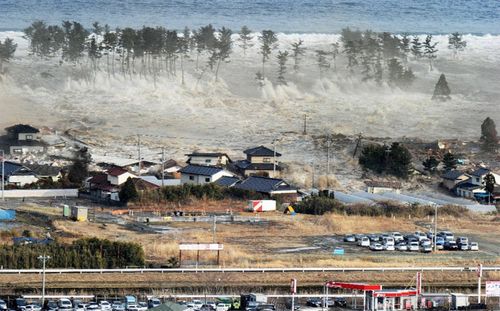
The Gulf Coast has weathered the worst hurricanes on U.S. soil but could yet face a deadly tsunami. The nearby Caribbean hosts a fault line that has triggered tidal waves though most have been small. However, the U.S. Geologic Service believes that undersea landslides could pose a serious hazard. In a 2009 report, the USGS noted that the continental shelf has been active enough to warrant status as a current threat. The submarine shelf was most active over 7,000 years ago, but land erosion may be tipping the balance toward more movement. Sediment from the Mississippi River is building up the undersea slopes and contributing to soil porosity. The resulting instability could produce a large landslide in any one of three locations and generate a tsunami up to 13 feet high. More research is needed to better characterize the risk, but the Gulf region knows too well that Mother Nature keeps her own odds.
4. Super Volcano
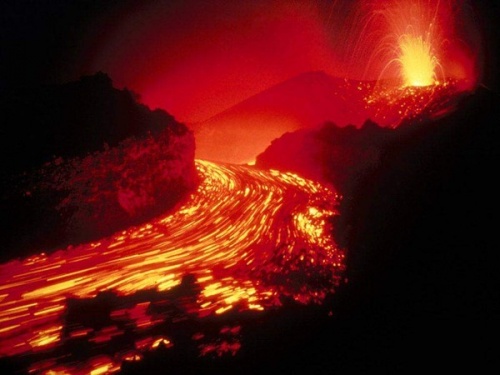
A super-volcano creates the sort of cataclysmic eruption that can devastate an entire planet with deadly debris and a poisoned atmosphere. While no such eruption has been recorded in human history, scientists are looking at Yellowstone as the next super threat. Yellowstone last erupted on a mega scale 640,000 years ago and is still considered active. Small magma flows are fairly frequent though there is little evidence that enough pressure has built up to prime the mountain for a super explosion. However, some scientists caution that volcanic hot spots can be unpredictable. The consequences of a super-volcano eruption could lay waste to half of the United States. With stakes this high, even small odds have the experts paying close attention.
5. Los Angeles Tsunami
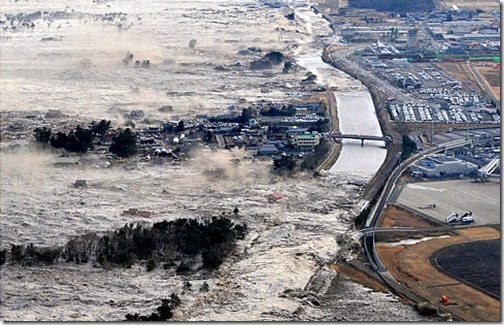
Earthquake faults just off of the Southern California coast could trigger a large tsunami as high as 50 feet. Faults such as the San Diego Trough can produce a magnitude 7.7 quake. Due to the proximity of faults to shore, coastal residents would have no tsunami warning. The disaster would rival Katrina, and one estimate puts potential damage at $43 billion. Another possible source is a submarine landslide that would send a giant wave ashore within minutes. Scientists say these landslides could generate multiple waves up to 40 feet. While these types of tsunamis would not travel as far inland or reach as much coastline as those from large quakes, they would inundate the neighborhoods in their path.
6. Pacific Northwest Super Quake
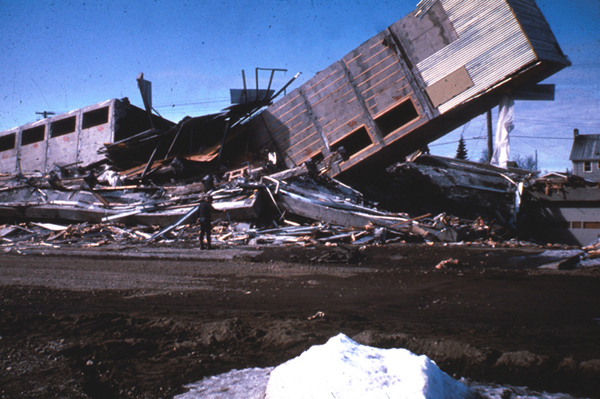
The 2011 Japan 8.9-magnitude earthquake was a horror that should serve as a wake-up call to the same threat in the Pacific Northwest. Japan sits on a subduction zone in which one tectonic plate can slide under another and cause massive temblors of magnitude 9.0 or greater. The Pacific north coast houses the Cascadia subduction zone, which produced the most devastating quake to affect the United States. In 1964, Alaska experienced a 9.2 that sent a tsunami surging down the entire coast. The Cascadia fault, considered due for a mega-quake, sits only about 60 miles offshore from Portland, Seattle and Vancouver. These cities are not built to withstand massive quakes and would suffer catastrophic damage. After enduring five minutes of continual shaking, residents would have maybe nine minutes to evacuate above a 50-foot elevation in order to escape the giant tsunami.
7. Volcanic Mudslide in Washington State
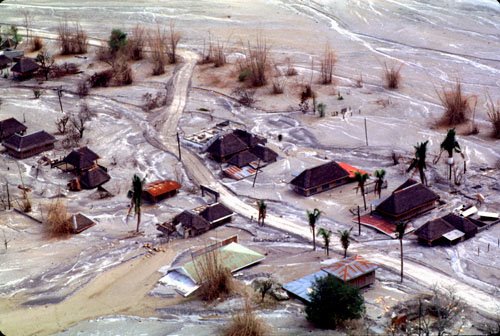
Majestic Mount Rainier is also an active volcano that could erupt at any time. An eruption could trigger a massive mudslide that would surge through populated valleys and bury everything in its path. According to recent studies by U.S. Geological Survey scientists, the mountain’s western slope hosts 400 tons of weakened rock that could jar loose and engulf the Puyallup River Valley. The area’s 30,000 residents might have as little as 45 minutes in which to evacuate. Such a mudslide, known to scientists as a lahar, would be similar to the Columbian volcano disaster that killed over 23,000 people in 1985.
8. Climate Change
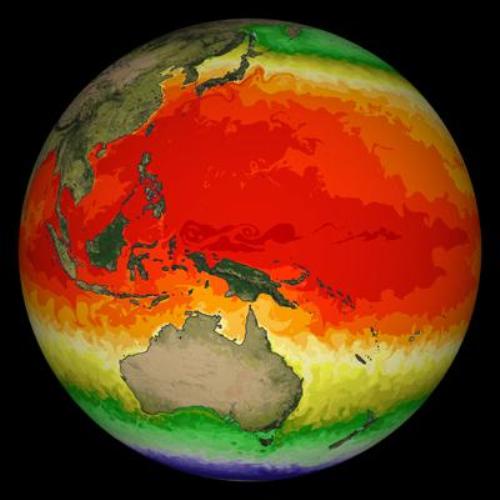
The Pentagon has formally declared climate change to be a national threat. A National Intelligence Council report states that climate change and overuse of resources are leading to severe water shortages. The problem will become globally serious enough to threaten U.S. security interests. In one example, the assessment predicts that the Colorado River could dry up by 2057. The river provides drinking water to 27 million people. In more pointed terms, several military experts from the Center for Naval Analyses warned Congress of the need to plan for the consequences of climate change including health pandemics and worldwide food shortages. Retired USN Vice Admiral Dennis McGinn noted the impending likelihood of increased disasters that would strain global resources and cause great humanitarian suffering.
9. Category 5 Hurricane in Florida
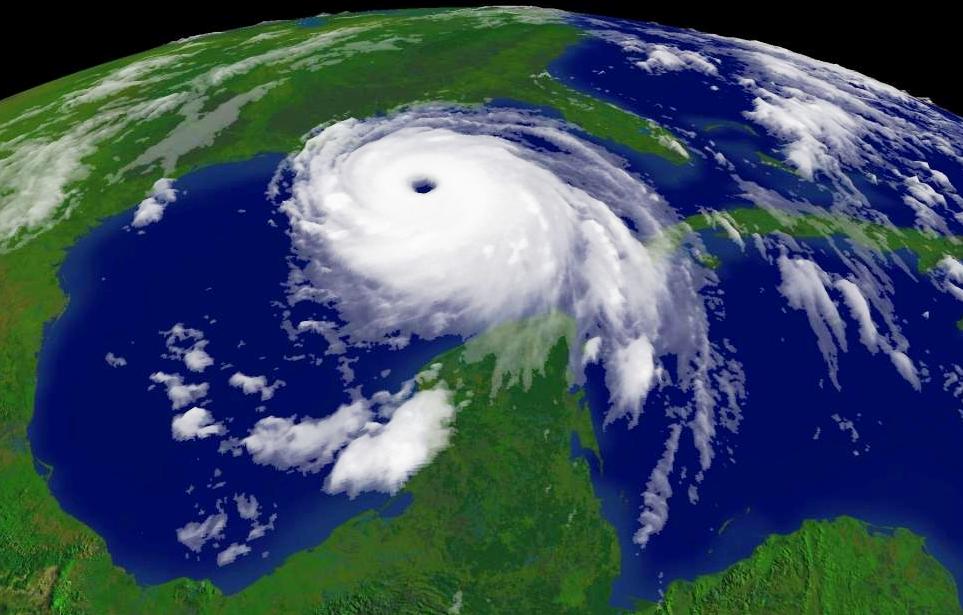
Fiercer and more frequent hurricanes have battered the United States in recent years, and many climate experts expect this trend to continue. Meanwhile the population continues to increase along vulnerable coastal areas. In the wake of Katrina, developers persisted in building new communities in Miami Beach and other trendy spots. A category 5 hurricane would sweep winds in excess of 155 miles per hour across major population centers and send 18-foot waves inland. The surprise isn’t the damage a monster storm causes but the fact that tens of millions of people have chosen to live directly in its likely path.
Technological
10. Massive Cyber Attack

If cyber threats sound abstract, think about the entire U.S. power grid collapsing right before a weapons attack. Imagine what would happen if military systems went offline or the banking system was flooded with false data. These scenarios are more likely than a nuclear strike on U.S. soil, and we are unprepared to prevent them. The reality is that nations such as North Korea, China and Russia constantly hammer at U.S. systems and look for weaknesses to exploit. Cyber skills are part of the global military arsenal and are deployed in confrontations. Cyber terrorism, once the subject of action-movie hyperbole, is a constant threat. A successful large-scale attack could bring cities to a standstill and cost far more lives than 9/11.
11. China Telecom Espionage

China’s two leading telecommunications firms pose a national security threat to the United States. According to a House Intelligence Committee report, components from tech giants ZTE and Huawei Technologies could be tools of espionage. Experts have traced many cyber attacks back to Chinese origins. Further, the communist Chinese government is suspected of recruiting private-sector technology and business experts in its spy efforts. ZTE and Huawei are global providers of mobile phones and telecommunications equipment and seek to expand trade with the United States. Much like a Trojan horse, tiny foreign chips could carry the means of a devastating security breach.
12. Nuclear Reactor Disaster
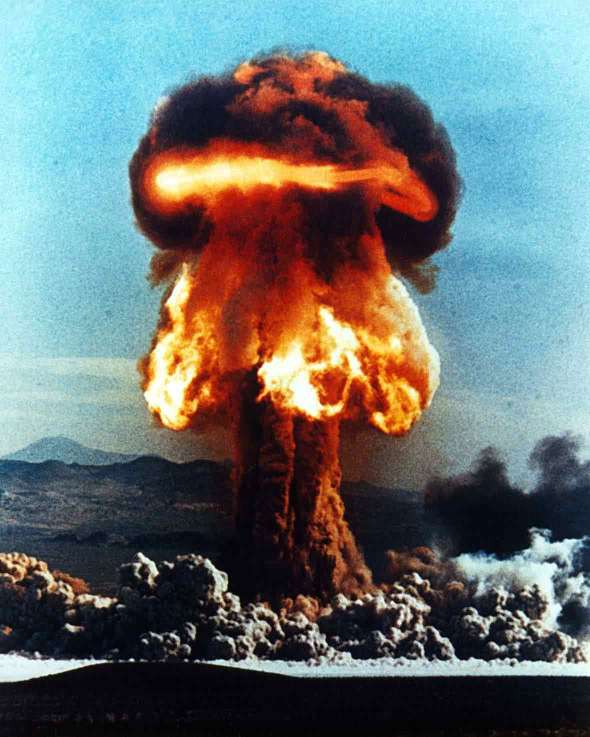
The 2011 Japan disaster spotlights the U.S. West Coast where the many of the same conditions apply. Southern California has two nuclear reactors near major fault lines. Diablo Canyon in San Luis Obispo County sits near the offshore Shoreline Fault among others. The San Onofre plant in San Diego County is built near an offshore fault that could spawn a tsunami in addition to a quake of large magnitude. The infamous San Andreas Fault also runs east of San Onofre. The entire coastline faces a tsunami threat from a predicted megathrust quake on the Cascadia subduction zone in the Pacific Northwest. Diablo Canyon is built to withstand a quake of magnitude 7.0 while San Onofre claims 7.5. Both were designed to survive a 25-foot tsunami. However, the faults near both reactors are capable of stronger magnitude temblors. Further, tsunamis from offshore landslides could reach 40 or 50 feet and would give little warning.
Political and International
13. Nuclear Weapons Strike
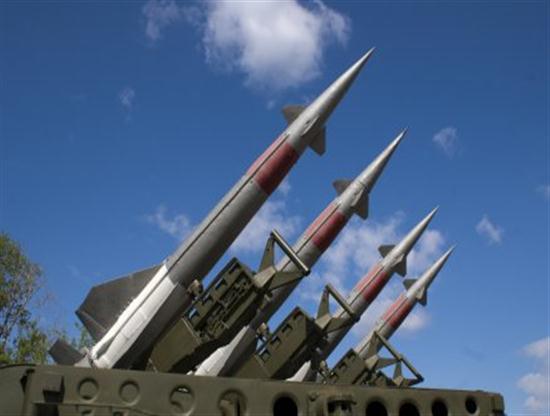
The risk of an enemy first strike grows with each nation that acquires nuclear capability. There is something of a domino effect as nations with nukes arm their allies. While Iran and North Korea are well-known threats, other countries are catching up. Volatile Syria has a nuclear weapons program, and Burma has admitted to building up its own expertise. Pakistan has over 200 nuclear weapons. The question is how far non-Western nations will go in equipping each other with the capacity to wreak nuclear destruction.
14. Mass-casualty Terrorism
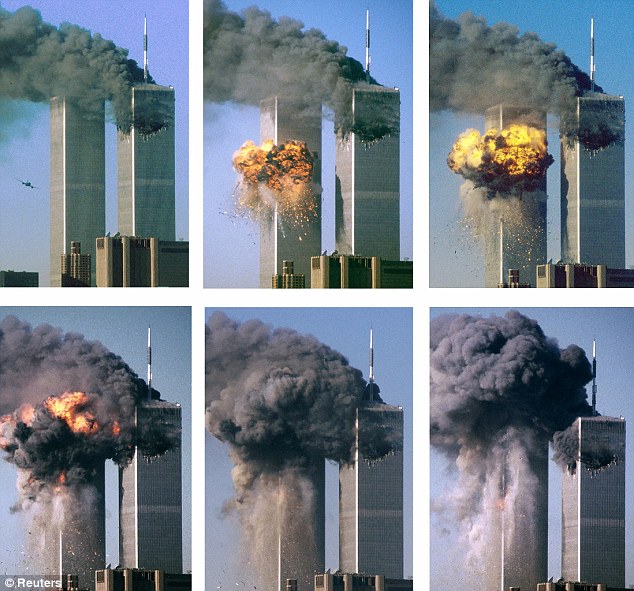
As 9/11 shows, terrorists will seize means and opportunity to inflict the most damage possible. National security expert Sebastian Gorka points out that the 9/11 terrorists killed more people in 102 minutes than the Irish Republican Army did in 30 years. If al-Qaeda operatives or others with a vendetta against the West obtain weapons of mass destruction, the consequences could be almost unimaginable. Such a nuclear weapon could fit in a suitcase. Meanwhile bioterrorism presents a significant threat in a potentially tiny package that can be smuggled across borders in a makeup bag.
15. Over Entitlement

The politically charged subject of federal entitlements underscores a very real threat to U.S. financial health. According to the Government Accountability Office, the cost of the mandatory entitlement programs Medicare, Medicaid and Social Security is expected to grow much faster than the economy. Reasons include an aging population and the rising cost of health care. However, these legacy programs are also bloated and inefficient. Every citizen will be affected and should be concerned with reform to lower costs while providing services that make sense for today’s society.
Health Related
16. Obesity and Diabetes

While the emotional and social consequences of obesity may be intensely personal, the medical cost is shared among the entire nation. Obesity is directly linked to diabetes, and both have become U.S. epidemics. The American Diabetic Association estimates the yearly cost of uncontrolled diabetes at $174 billion, which puts it ahead of many wars and natural disasters. Diabetes, a chronic disease with no cure, requires regular medical intervention. It often leads to life-threatening and costly complications such as heart disease and kidney failure. The obese also disproportionately suffer a host of other ailments from joint problems to stroke. Most alarming, the obesity rate among children is skyrocketing, setting up future generations for a shortened lifespan and chronic health problems. The epidemic is fueling runaway healthcare costs and compromising quality of life for millions of Americans.
17. Prescription Pain Killers

The domestic war on drugs is targeting prescription painkillers as a growing lethal problem. According to the Centers for Disease Control and Prevention, deaths from painkiller overdoses almost tripled from 2000 to 2007. Over 11,000 people died versus less than half that number from cocaine and heroin. The federal government has made cracking down on oxycodone and other opiates a top health priority. The mandate presents a tough challenge in the face of the lucrative industry that has risen to supply addicts with legal product. The suppliers often masquerade as pain clinics and are especially numerous in Florida. Additionally, some legitimate clinics tend to let greed overrule ethics and are too quick to refill prescriptions. The cost is financial as well as personal. As of 2009, over 1.2 million people had visited emergency rooms for complications from prescription pain medication.
18. Autism and Development Disorders
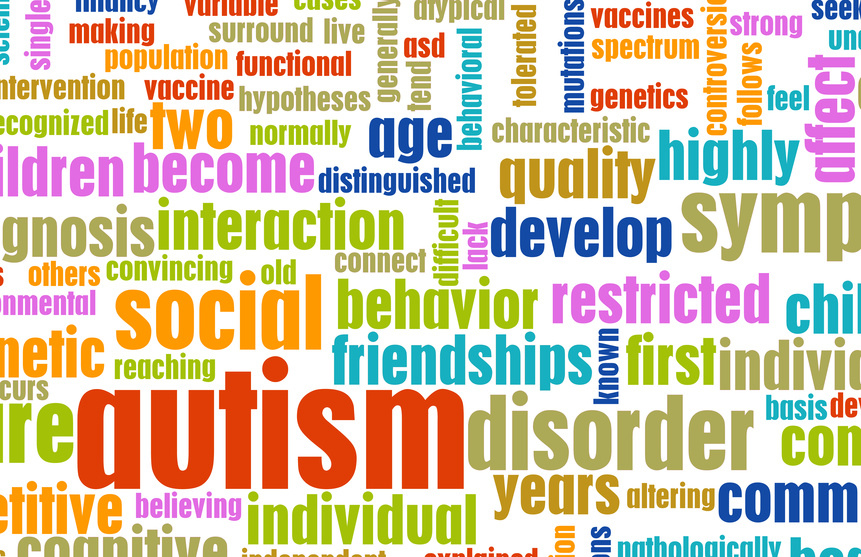
The new leader of the American Academy of Pediatrics has declared autism and other development disorders national epidemics, and millions of parents and teachers no doubt agree. James Perrin, who will take over as president in 2014, stressed that autism and several other disorders are far more common today than 10 years ago. As a result, families and school systems are struggling to find resources to serve affected children. In addition to more research into cause and prevention, families need more accurate diagnoses. Pediatricians require more targeted training and quality time with patients to catch these conditions as early as possible. Programs for children with special needs are expensive, but the cost to society is much higher without them.
19. Uninsured Millions

Over 46 million Americans forgo health insurance primarily for financial reasons. When the uninsured need crisis medical services, the taxpayer often foots the bill. Long-term costs are even more insidious. People without insurance are far more likely to skip well visits to the doctor and crucial screening tests. As a result, they get sick or disabled more often and are diagnosed at later stages. They become less able to work and die earlier, robbing the nation of economic productivity. Concurrently, their healthcare costs skyrocket and add to the country’s bloated medical bill.
20. Health Worker Shortage
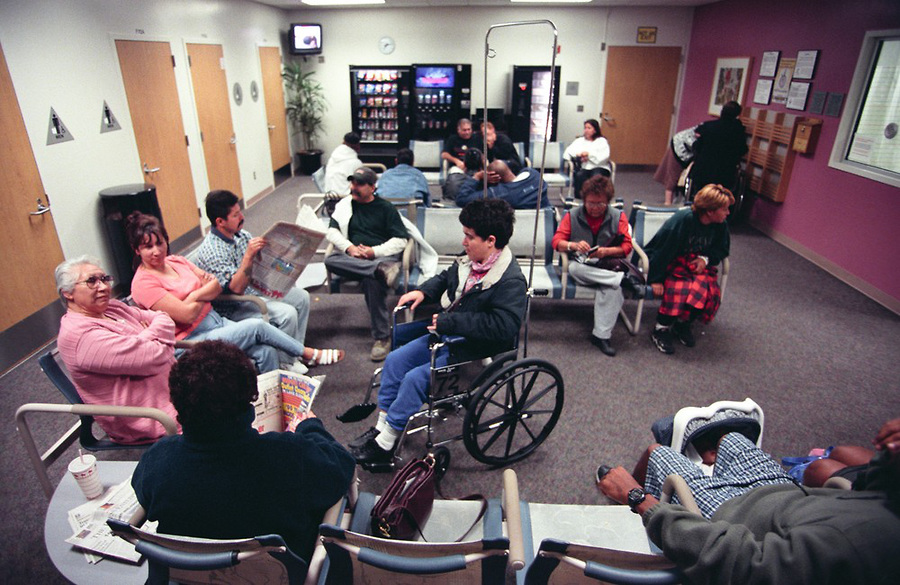
When doctors and nurses are overworked and spread too thin, patients die. The current healthcare worker shortage has led to what one nurse told the Chicago Tribune were nightmarish conditions that sound more like disaster triage than a normal shift in an American hospital. Staff members are often assigned duties beyond their scope of expertise. They work back-to-back shifts and have no time to check the accuracy of prescriptions and other orders. According to the Institute of Medicine, medication mistakes kill an estimated 7,000 people each year. This figure does not include other types of medical errors made by overburdened staff. While healthcare costs need to come down, scrimping on health workers is not the way to improve the system.